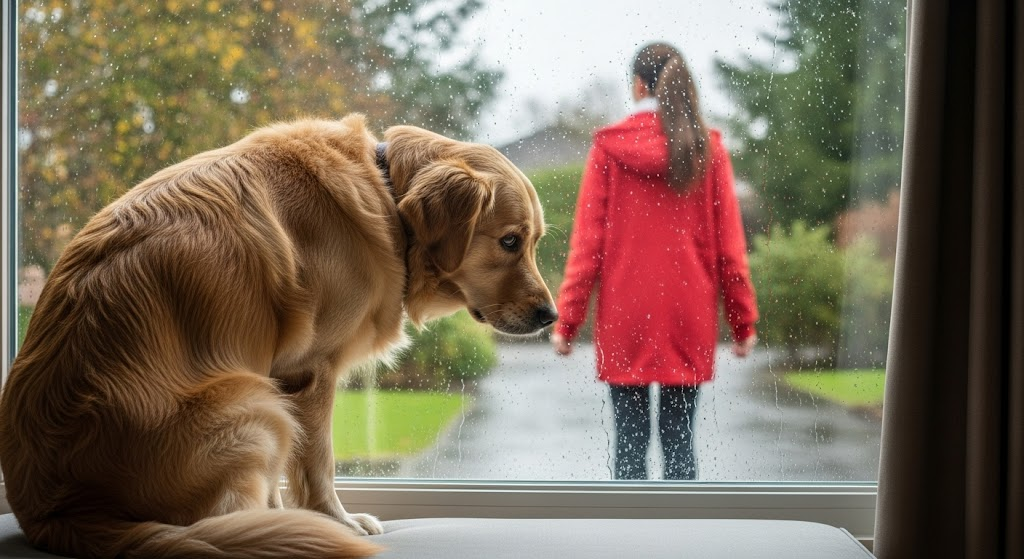
Dog Separation Anxiety Symptoms: A Comprehensive Guide
For many dog owners, leaving their beloved companion home alone can be fraught with worry. While a little sadness or a brief whimper when you depart is normal, persistent and intense distress that manifests when a dog is separated from their owner is a sign of dog separation anxiety. This isn’t just about missing you; it’s a genuine panic disorder that can be heartbreaking for both dogs and their families.
Recognizing the signs of separation anxiety is the first crucial step toward helping your dog find peace. This comprehensive guide will explore the symptoms, causes, and initial steps you can take to support your anxious companion.
What is Dog Separation Anxiety?
Dog separation anxiety is a behavioral condition where a dog experiences extreme stress and panic when left alone or separated from their primary attachment figure(s). It’s more than just boredom or a bit of mischief; it’s a true phobia of isolation.
Dogs with this condition often become distressed even when their owner is just in another room or preparing to leave. The anxiety stems from an intense over-attachment to their human companions, leading to a feeling of utter helplessness and terror when that connection is severed.
Common Dog Separation Anxiety Symptoms
Identifying separation anxiety can be challenging because some symptoms might overlap with other behavioral issues, like lack of house training or insufficient exercise. However, the key differentiator is that these behaviors only occur when the dog is left alone or believes they are about to be left alone.
Here are the most common symptoms of dog separation anxiety:
1. Destructive Behavior
- This is one of the most visible signs. Anxious dogs often target exits (doors, windows) in an attempt to escape and find their owner. You might find:
- Chewing: Furniture, doorframes, windowsills, personal items (clothes, shoes) that carry your scent.
- Scratching or Digging: Around doors, windows, or even through walls.
- Shredding: Upholstery, pillows, carpets, or anything they can get their paws on. This destruction is not out of spite but a frantic attempt to relieve their overwhelming stress or to escape their perceived confinement.
2. Inappropriate Urination and Defecation
House-trained dogs suddenly having accidents indoors, despite being given opportunities to relieve themselves before you leave, is a strong indicator. This isn’t defiance; it’s an involuntary physical manifestation of extreme stress and fear. The dog may urinate or defecate in places they normally wouldn’t, even on their owner’s bed or personal belongings, which carry a strong comforting scent.
3. Excessive Vocalization
This is often the first symptom neighbors notice and complain about. When left alone, a dog with separation anxiety may engage in:
- Howling: A long, sustained vocalization, often sounding mournful or distressed.
- Barking: Continuous, repetitive barking that doesn’t stop.
- Whining: High-pitched, continuous sounds indicating distress. These vocalizations are desperate attempts to call their owner back.
4. Pacing and Restlessness
Before you even leave, or once you’re gone, an anxious dog might exhibit repetitive movements:
- Pacing: Walking in a repetitive pattern, often in circles or back and forth.
- Trembling or Shaking: Even in a comfortable environment.
- Drooling or Panting Excessively: Beyond what’s normal for the temperature or activity level, indicating physiological stress. This restlessness is a sign of their inability to settle or relax.
5. Escape Attempts
Dogs with severe separation anxiety may injure themselves trying to get out of crates, rooms, or even their home. They might break nails, bloody their paws, or damage their teeth in their frantic efforts. This is driven by an overwhelming urge to reunite with their owner.
6. Following You Constantly (“Velcro Dog”)
While not a symptom when alone, this behavior often precedes and contributes to separation anxiety. If your dog constantly follows you from room to room, never lets you out of their sight, and reacts with distress even when you go to the bathroom, it indicates an unhealthy attachment pattern that can easily escalate into full-blown separation anxiety when you leave the house.
7. Depression or Withdrawal
Some dogs may become withdrawn, losing interest in food, toys, or activities they normally enjoy when left alone. They might just lie by the door, completely shut down, rather than engaging in destructive behaviors. This can be harder to spot without a camera.
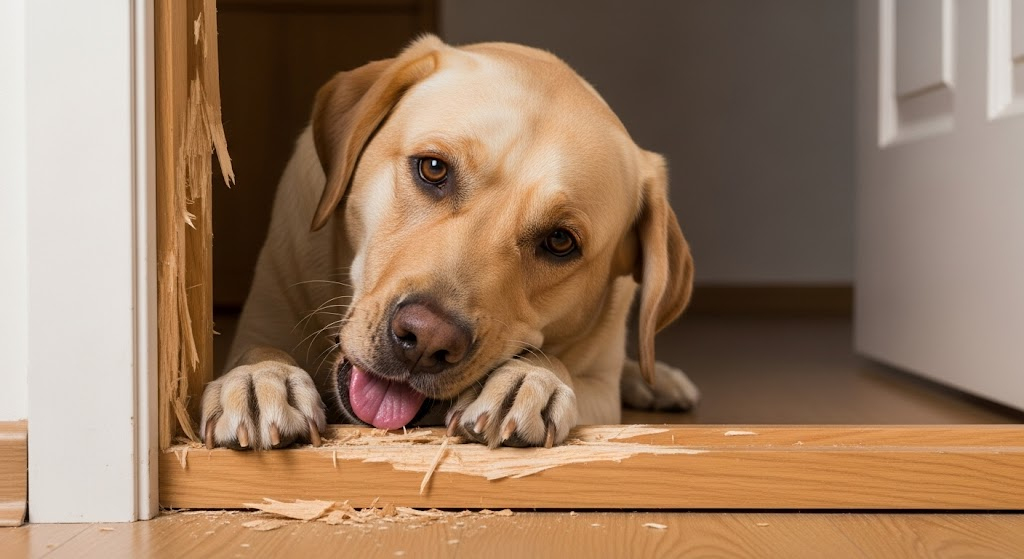
Contributing Factors and Causes of Separation Anxiety in Dogs
While the exact cause isn’t always clear, several factors can contribute to the development of separation anxiety:
- Changes in Routine: A sudden change in schedule (e.g., owner returns to work, new job hours, children go back to school).
- Change in Residence: Moving to a new home.
- Change in Family Members: The absence of a family member (death, divorce, child leaving for college).
- Adoption from a Shelter: Dogs from shelters may have experienced abandonment, making them more prone to anxiety.
- Lack of Independence Training: Never teaching a puppy to be comfortable alone from a young age.
- Over-Attachment: Unintentionally reinforcing “Velcro” behavior by constantly responding to your dog’s need for attention.
Diagnosing Separation Anxiety in Dogs
A proper diagnosis is vital. It’s crucial to rule out other medical or behavioral conditions that might present similar symptoms, such as:
- Incontinence: Medical issues like a urinary tract infection.
- Lack of Potty Training: Genuine accidents due to incomplete house training.
- Boredom/Lack of Exercise: Destructive behavior stemming from insufficient physical or mental stimulation.
- Inappropriate Elimination: Marking behavior or submissive urination.
A veterinarian can rule out medical causes, while a certified professional dog trainer or veterinary behaviorist can help distinguish separation anxiety from other behavioral problems through observation and detailed history taking.
Prevention of Separation Anxiety in Dogs
Preventing separation anxiety is always easier than treating it, especially if you start when your dog is a puppy. However, these strategies can be beneficial for dogs of any age. The goal is to teach your dog that being alone is a normal, non-threatening part of their routine, fostering independence rather than over-attachment.
Foster Independence Early On:
From the moment you bring your dog home, encourage healthy independence. This means:
- “Alone” Time While You’re Home: Teach your dog to be comfortable in another room or a designated safe space (like a cozy bed or crate, if they’re crate-trained and enjoy it) while you’re still in the house but not directly interacting with them. Start with short periods and gradually increase the duration.
- Vary Your Presence: Don’t always let your dog follow you from room to room. Sometimes, close a door between you for a few minutes.
- Independent Play: Encourage play with puzzle toys or long-lasting chews that they can enjoy by themselves.
Desensitize Departure Cues:
Dogs are smart and quickly learn your “leaving rituals” (grabbing keys, putting on shoes, picking up your bag). These cues can trigger anxiety even before you walk out the door.
- Practice “Fake” Departures: Perform your leaving rituals multiple times a day without actually leaving. Grab your keys, walk to the door, open it, then close it and sit back down. Repeat this often until your dog shows no reaction.
- Vary the Order: Mix up your routine. Sometimes put on your shoes first, then brush your teeth, then grab your keys. This makes your departure less predictable.
Make Departures and Arrivals Low-Key:
Avoid making a big fuss when you leave or return. High-energy goodbyes and enthusiastic welcomes can inadvertently heighten your dog’s anxiety about your absence.
- Calm Departures: Just before you leave, give your dog a long-lasting, high-value chew toy or a food puzzle. Slip out quietly while they’re engaged. Don’t say goodbye or make eye contact.
- Quiet Arrivals: When you return, ignore your dog for the first few minutes until they’ve settled down. Wait for them to be calm (e.g., sitting or lying down) before offering a calm greeting, praise, or a quiet pet.
Ensure Adequate Exercise and Mental Stimulation:
A physically tired and mentally stimulated dog is generally a calmer dog. Before you plan to leave them alone, ensure they’ve had plenty of exercise, playtime, and mental enrichment (like a training session or a puzzle toy). This helps drain pent-up energy and reduces overall anxiety levels, making them more likely to rest while you’re gone.
Consider a “Safe Space”:
Provide a comfortable, secure spot for your dog when you’re away. This could be a crate (if they love it and feel safe there), a dog bed in a quiet room, or a designated corner. Make this space appealing with comfy bedding and favorite toys.
Recovery and Management of Separation Anxiety in Dogs
Recovering from separation anxiety is a journey that requires significant patience, consistency, and a structured approach. There’s no quick fix, but with diligent effort, many dogs can learn to cope better, and some can even fully recover. Management strategies are crucial during the recovery phase to prevent further anxiety and ensure safety.
Avoid Leaving Your Dog Alone Beyond Their Tolerance Level:
This is the most critical management step. During active training, your dog should never be left alone for longer than they can comfortably handle without showing anxiety. This might mean arranging for dog sitters, doggy daycare, bringing your dog to work, or asking friends/family to help out. Every anxious episode reinforces the panic and makes recovery harder.
Implement a Gradual Desensitization Plan:
This is the core of behavior modification for separation anxiety. You’ll systematically increase your dog’s tolerance to being alone:
- Baseline Assessment: Use a camera to determine the maximum amount of time your dog can be alone without showing any signs of anxiety. This might be just seconds.
- Practice Brief Absences: Start with departures that are below their anxiety threshold. If they can tolerate 10 seconds, start with 5-second absences.
- Positive Association: Always pair your departure with something highly positive, like a frozen Kong stuffed with peanut butter or wet food, or a special chew toy that only appears when you leave and disappears when you return.
- Controlled Increase: Gradually increase the duration of your absences by mere seconds or a minute at a time, always returning before your dog shows signs of distress. If they show anxiety, you’ve gone too far, and you need to reduce the duration for the next session.
- Vary Duration and Timing: Once your dog is comfortable with a certain duration, vary the length of your absences (e.g., 5 minutes, then 2 minutes, then 7 minutes) to prevent them from anticipating your return precisely.
Establish a Predictable Routine:
While you want to desensitize to departure cues, a consistent daily routine for feeding, walks, and playtime can provide a sense of stability and reduce overall anxiety. Dogs thrive on predictability.
- Environmental Enrichment: Provide ample mental stimulation and physical exercise. A tired dog is often less anxious. Use puzzle feeders, scent games, and engaging walks to tire them out both physically and mentally before planned alone time.
- Calming Aids: Discuss various calming aids with your vet or a certified professional dog trainer:
- DAP Diffusers/Sprays: Dog Appeasing Pheromone (DAP) products mimic the appeasing pheromones mothers release, promoting a sense of calm.
- Calming Supplements: Products containing L-Theanine, Zylkene (hydrolyzed milk protein), or CBD (if legal and recommended by a vet) may help some dogs.
- ThunderShirts/Anxiety Wraps: These provide gentle, constant pressure, which can have a calming effect similar to swaddling a baby.
- White Noise/Classical Music/TV: Masking outside sounds can prevent triggers and create a more consistent auditory environment.
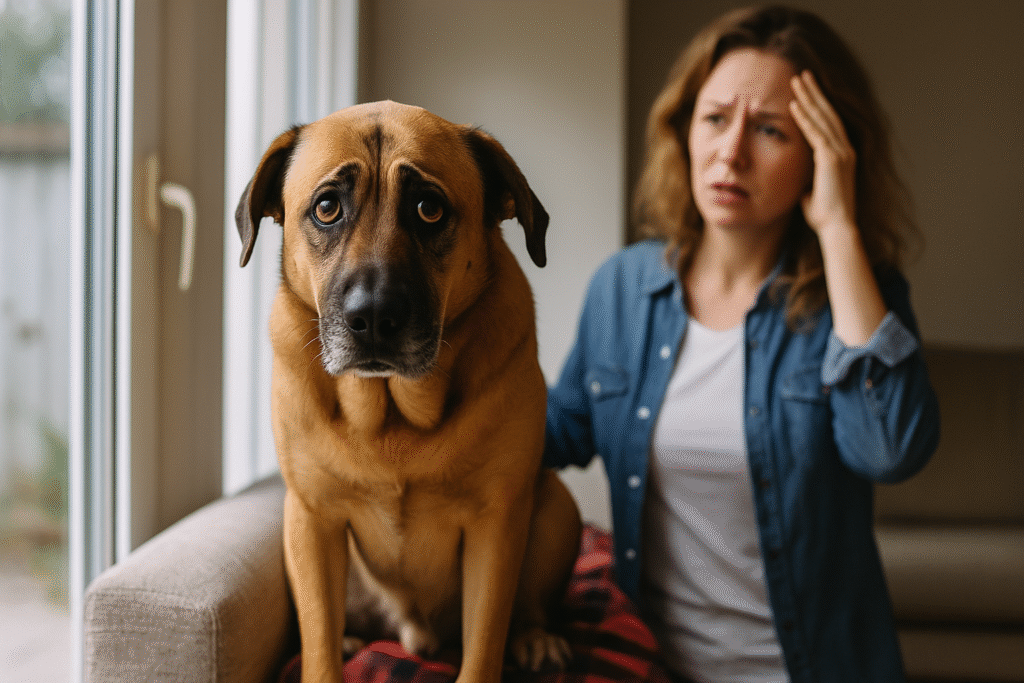
Treatment of Separation Anxiety in Dogs
Treating separation anxiety effectively often requires a multi-pronged approach tailored to the individual dog and the severity of their condition. It typically involves behavior modification, environmental management, and, in many cases, pharmacological intervention prescribed by a veterinary professional. It’s crucial to consult with both your veterinarian and a certified professional dog trainer or veterinary behaviorist.
Behavior Modification (Desensitization & Counter-Conditioning):
This is the cornerstone of treatment. As detailed in the “Recovery and Management” section, this involves gradually exposing your dog to increasing periods of alone time while associating those periods with positive experiences.
- Purpose: To change your dog’s emotional response from panic to calm or even positive anticipation when left alone.
- Methodology: Systematic, incremental increases in duration of absence, always ensuring the dog remains below their anxiety threshold, paired with high-value, exclusive-to-departure rewards.
Medication (Pharmacological Intervention):
For moderate to severe cases of separation anxiety, behavior modification alone may not be enough. The dog’s anxiety levels might be so high that they cannot learn or process new information effectively. In these situations, your veterinarian may prescribe anti-anxiety medication.
- Role: Medication is not a “cure” but a tool to reduce your dog’s overall anxiety levels, allowing the behavior modification techniques to be more effective. It helps them get out of the “panic zone” so they can actually learn.
- Types: Common medications include Selective Serotonin Reuptake Inhibitors (SSRIs) like fluoxetine (Prozac) or tricyclic antidepressants (TCAs) like clomipramine (Clomicalm). These are typically given daily for an extended period.
- Situational Medication: In some cases, a fast-acting anxiolytic might be prescribed for very short, planned absences, but these are generally not for long-term daily use.
- Veterinary Oversight: Medication should always be prescribed and monitored by a veterinarian or veterinary behaviorist. Never self-medicate your dog.
Professional Guidance is Key:
Attempting to treat severe separation anxiety without professional help can be overwhelming and often unsuccessful, potentially worsening the condition.
- Certified Professional Dog Trainers (CPDT-KA, CDBC): Can design and guide you through behavior modification plans.
- Veterinary Behaviorists (DACVB): Board-certified veterinarians with advanced training in animal behavior. They are qualified to diagnose, prescribe medication, and create comprehensive treatment plans for complex behavioral disorders like severe separation anxiety.
- Benefits of Professional Support: They can objectively assess your dog’s behavior, identify nuances you might miss, provide tailored strategies, offer ongoing support, and adjust the plan as your dog progresses.
Environmental Management:
While not a “treatment” in itself, effective management (as discussed above, like preventing alone time beyond tolerance) is critical to prevent relapses and ensure the dog’s safety and well-being throughout the treatment process. Without proper management, every anxious episode can undo progress.
Treating separation anxiety is a marathon, not a sprint. It requires dedication, patience, and a willingness to adapt your lifestyle temporarily. However, the reward of a calmer, happier dog who can comfortably cope with your absence is immeasurable.
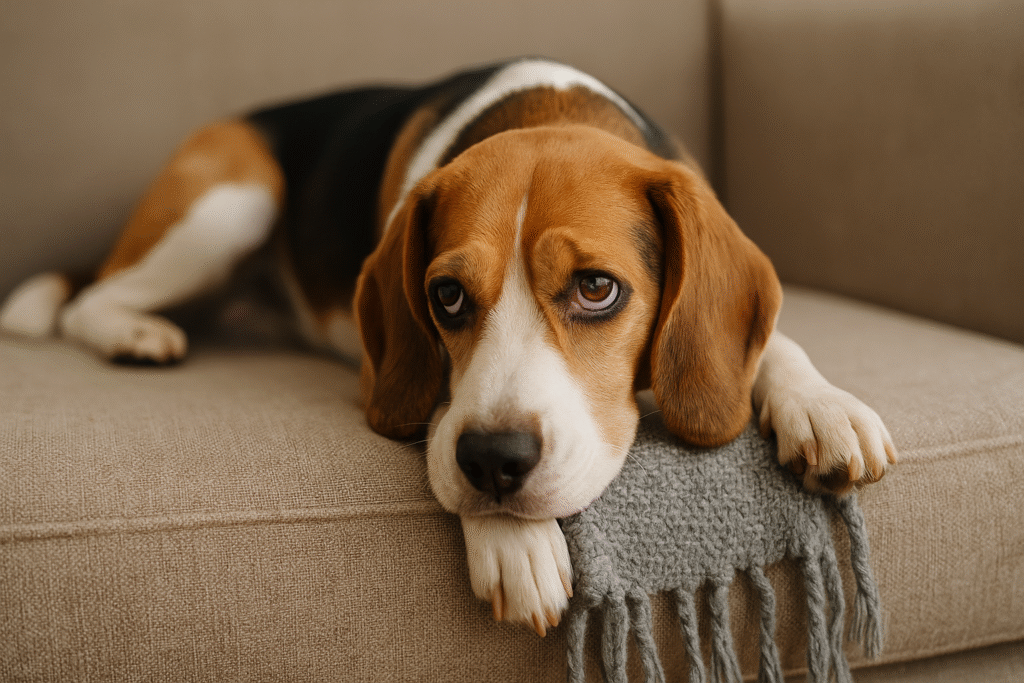
How Do You Help A Dog With Separation Anxiety?
Helping a dog with separation anxiety requires a multi-faceted approach, often combining behavior modification, management strategies, and sometimes medication (prescribed by a vet).
- Desensitization and Counter-Conditioning: Gradually expose your dog to short periods of alone time, starting with just seconds, and pair it with positive experiences (e.g., a special Kong filled with high-value treats that only appears when you leave). Slowly increase the duration as your dog copes.
- Practice Departure Cues: Desensitize your dog to your “leaving” rituals (picking up keys, putting on shoes) by performing them frequently without actually leaving.
- Encourage Independence: Teach your dog to settle in another room while you’re home. Avoid making departures and arrivals highly emotional events.
- Increase Exercise & Mental Stimulation: A tired dog is a calmer dog. Ensure your dog gets plenty of physical activity and mental enrichment (puzzle toys, training sessions) to reduce overall anxiety levels.
- Crate Training (if positive): For some dogs, a properly introduced crate can be a safe den. For others, it can exacerbate panic if they become destructive or injure themselves trying to escape. Never use the crate if it increases their anxiety.
- Veterinary Consultation: Consult your veterinarian. They may recommend dietary changes, supplements, or anti-anxiety medication in severe cases to help reduce your dog’s panic to a level where behavior modification can be effective.
How Can I Tell If My Dog Has Separation Anxiety?
The clearest way to tell if your dog has separation anxiety is to observe their behavior specifically when they are left alone. If you notice a consistent pattern of destructive chewing (especially around exits), inappropriate urination/defecation (if otherwise house-trained), excessive barking/howling/whining, frantic pacing, or self-harm attempts (like chewing at their paws or breaking out of a crate) only when you’re absent, it’s highly indicative of separation anxiety. Setting up a camera to record your dog’s behavior while you’re gone is the most definitive way to confirm these symptoms.
How do you reduce anxiety in a dog?
Reducing anxiety in a dog involves addressing their overall well-being and specific triggers:
- Consistent Routine: Dogs thrive on predictability.
- Adequate Exercise: Physical activity helps burn off nervous energy.
- Mental Enrichment: Puzzle toys, training, and scent work keep their minds engaged.
- Safe Space: Provide a comfortable, quiet den or bed where they feel secure.
- Calm Leadership: Project confidence and calmness. Dogs look to their owners for cues.
- Positive Reinforcement: Reward calm, confident behavior.
- Avoid Punishment: Punishing anxious behaviors only increases fear.
- Diet and Supplements: Discuss anxiety-reducing diets or supplements (like L-Theanine or Zylkene) with your vet.
- Professional Help: For moderate to severe anxiety, consult a certified professional dog trainer or veterinary behaviorist for a tailored behavior modification plan.
How Do You Stop A Dog From Crying When You Leave?
Stopping a dog from crying when you leave is a key component of addressing separation anxiety. It requires systematic desensitization:
- Practice Short Absences: Start with departures that are so short your dog doesn’t have time to cry (e.g., just stepping outside for 10 seconds, then returning).
- Gradual Increase: Slowly increase the duration of your absences over days or weeks, always returning before your dog starts to cry.
- Avoid Emotional Departures/Arrivals: Make your departures very low-key. Don’t make a big fuss when you leave or when you return. Wait until your dog is calm before acknowledging them upon arrival.
- Provide Distractions: Offer a highly engaging, long-lasting chew toy (like a frozen Kong) just as you leave to associate your departure with a positive, distracting activity.
- Sound Masking: Use white noise, classical music, or a TV to mask outside sounds that might trigger anxiety.
- Professional Guidance: If crying persists, professional guidance is essential to create a structured desensitization plan.
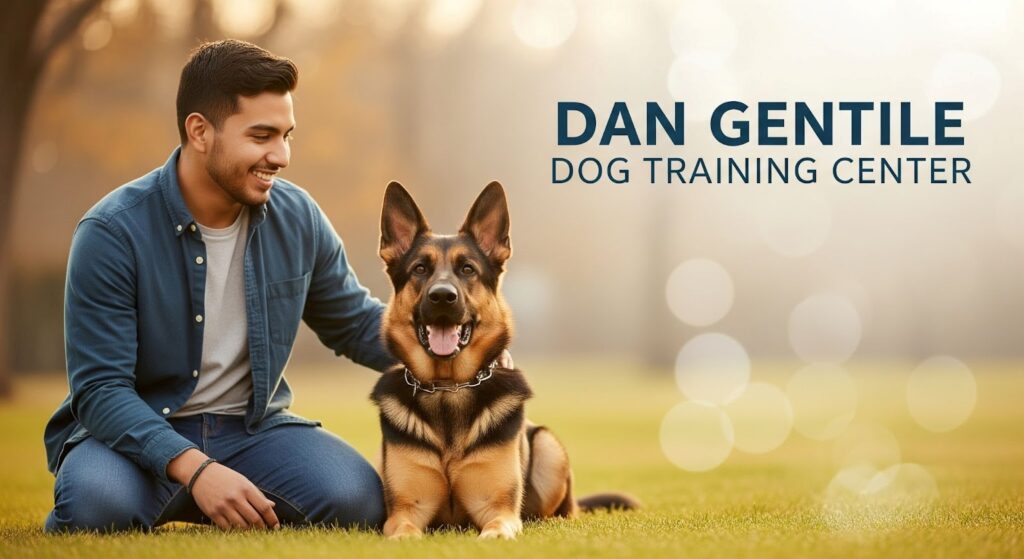
Seeking Professional Guidance from Dan Gentile Dog Training Center
Addressing dog separation anxiety requires patience, consistency, and a deep understanding of canine behavior. It can be a challenging journey, but you don’t have to face it alone. At Dan Gentile Dog Training Center, we have decades of experience helping dogs overcome behavioral challenges, including anxiety. Our compassionate and effective methods are designed to build your dog’s confidence and foster independence, bringing peace back to your home.
- Tailored Dog and Training Programs in Monmouth County: If you’re in Monmouth County, New Jersey, or the surrounding areas, our specialized programs offer personalized solutions to help your dog manage and overcome separation anxiety. We focus on building a calm, confident companion.
Learn more about our customized solutions: Dog and Training Program Monmouth
- Comprehensive Training at Our New Jersey Center: Our state-of-the-art facility in Howell Township, NJ, serves the entire Tri-State area. We provide comprehensive behavior modification and training programs that address the root causes of anxiety, helping your dog feel more secure and comfortable when alone.
Discover the difference at our center: Dog and Training Center New Jersey
- Train your Dog with us While You are on Vacation: For some dogs with separation anxiety, an intensive, structured environment can provide the breakthrough they need. Our training facility offers focused, immersive training in a safe and stimulating setting.
Explore this convenient option: Train Your Dog While You Are on Vacation
When it comes to expert, results-driven dog training in Monmouth County, New Jersey, and its environs, Dan Gentile Dog Training Center is the trusted choice. Let us help you and your dog find relief from the distress of separation anxiety, leading to a happier, more harmonious life together.
Don’t Let Your Dog Suffer in Silence
Understanding and addressing dog separation anxiety symptoms is a critical step towards helping your dog lead a happier, calmer life. It’s a complex issue, but with accurate identification, patience, consistent application of positive training methods, and professional support when needed, most dogs can learn to cope better with being alone. Recognizing the signs and taking proactive steps can help transform your dog’s fear into comfort and confidence.
Enjoy This Article? You May Also Like:
- Trusted Puppy Training in Monmouth County, NJ – Dan Gentile Dog Training Center
- Build a Lasting Bond with Your Dog with Dan Gentile Dog Training Center
- The Best Dog Trainer in New Jersey: Why Dan Gentile Dog Training Center Is #1 for Obedience, Behavior & Results
- How to Stop Excessive Dog Barking: What Every NJ Dog Owner Needs to Know